#Swadeshi movement
Explore tagged Tumblr posts
Text
Happy Gandhi Jayanti
On this Gandhi Jayanti, let’s remember the values of truth, non-violence, and simplicity that Mahatma Gandhi taught us. May we continue to follow his path and work towards a better and peaceful tomorrow. 🙏✨
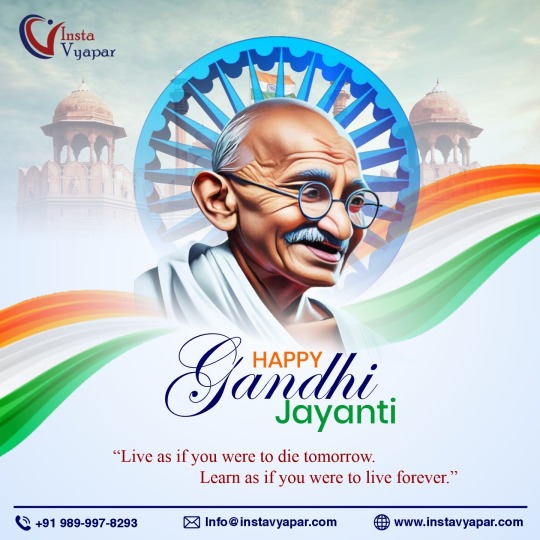
#Mahatma Gandhi#Father of the Nation#Truth and Non-Violence#Peace and Harmony#Gandhian Philosophy#Simplicity#Swadeshi Movement#Indian Independence#Freedom Fighter#Ahimsa#Satya#Unity in Diversity#Gandhi's Legacy#Social Reformer#Inspirational Leader
0 notes
Text
Partition of Bengal,Swadeshi Movement, Muslim League, Congress Party
1). Partition of Bengal :- The partition of Bengal was done by Lord Curzon in 1905 AD. The main objective of this partition was to create antagonism between Hindus and Muslims and to weaken national unity.
2). Division of Bengal into two parts:-According to Lord Curzon, Bengal was divided into two parts (modern West Bengal including West Bengal, Orissa and Bihar) and East Bengal would be East Bengal and Assam. Read more:-
1 note
·
View note
Text
The west is a lot more industrialized than much of the global south, and in many ways has lost a lot more of its past and memory to time and labor.
But we remember. Somehow, despite all that was lost under colonial weight, this was not. I've seen my grandmother's spinning wheel, and I inherited her ancient sewing machine. I've never touched a charkha myself, but I sing folk songs that remember spinning it. I dance to songs about spinning, and I cry to them too.
I thought it would make you feel better, to know that. Not everything ancient is dead. Often, it's alive in song, if in nothing else.
I've had a hard time articulating to people just how fundamental spinning used to be in people's lives, and how eerie it is that it's vanished so entirely. It occurred to me today that it's a bit like if in the future all food was made by machine, and people forgot what farming and cooking were. Not just that they forgot how to do it; they had never heard of it.
When they use phrases like "spinning yarns" for telling stories or "heckling a performer" without understanding where they come from, I imagine a scene in the future where someone uses the phrase "stir the pot" to mean "cause a disagreement" and I say, did you know a pot used to be a container for heating food, and stirring was a way of combining different components of food together? "Wow, you're full of weird facts! How do you even know that?"
When I say I spin and people say "What, like you do exercise bikes? Is that a kind of dancing? What's drafting? What's a hackle?" it's like if I started talking about my cooking hobby and my friend asked "What's salt? Also, what's cooking?" Well, you see, there are a lot of stages to food preparation, starting with planting crops, and cooking is one of the later stages. Salt is a chemical used in cooking which mostly alters the flavor of the food but can also be used for other things, like drawing out moisture...
"Wow, that sounds so complicated. You must have done a lot of research. You're so good at cooking!" I'm really not. In the past, children started learning about cooking as early as age five ("Isn't that child labor?"), and many people cooked every day their whole lives ("Man, people worked so hard back then."). And that's just an average person, not to mention people called "chefs" who did it professionally. I go to the historic preservation center to use their stove once or twice a week, and I started learning a couple years ago. So what I know is less sophisticated than what some children could do back in the day.
"Can you make me a snickers bar?" No, that would be pretty hard. I just make sandwiches mostly. Sometimes I do scrambled eggs. "Oh, I would've thought a snickers bar would be way more basic than eggs. They seem so simple!"
Haven't you ever wondered where food comes from? I ask them. When you were a kid, did you ever pick apart the different colored bits in your food and wonder what it was made of? "No, I never really thought about it." Did you know rice balls are called that because they're made from part of a plant called rice? "Oh haha, that's so weird. I thought 'rice' was just an adjective for anything that was soft and white."
People always ask me why I took up spinning. Isn't it weird that there are things we take so much for granted that we don't even notice when they're gone? Isn't it strange that something which has been part of humanity all across the planet since the Neanderthals is being forgotten in our generation? Isn't it funny that when knowledge dies, it leaves behind a ghost, just like a person? Don't you want to commune with it?
#fibre arts#textiles#spinning wheels#for all that i will endlessly criticize gandhi#the swadeshi movement saved us in many ways#this is one of them#also#not all anciet crafts are going extinct#leather is still worked and cured today the way it was for most of human history#if you buy handmade shoes#theyre still made the same way too#art survives#hope this makes you feel better op#i fully intend to learn how to use a spinning wheel when i get the chance#spinning#desiblr#history#also even in the west i kind of ended up amongst fibre arts nerds anyway#so spinning and knitting and stitching were still regular tasks all around me#nerds keep history alive
37K notes
·
View notes
Text
Swadeshi Movement in India
The Swadesh Movement had its genesis in the anti-partition movement which was stated to oppose the British decision to partition Bengal. The Government’s decision to partition Bengal had been made public in December 1903. The official reason given for the decision was that Bengal with a population of 78 million (about a quarter of the population of British India) had become too big to be…
0 notes
Text
Saryu Roy Honors India’s Hero Khudiram Bose in Jamshedpur
BJM members pay tribute to young revolutionary on martyrdom day Jamshedpur East MLA Saryu Roy and Bharatiya Jantantra Morcha members commemorate the sacrifice of freedom fighter Khudiram Bose at Mango. JAMSHEDPUR – Jamshedpur East legislator Saryu Roy, along with Bharatiya Jantantra Morcha (BJM) members, paid floral tributes to Veer Khudiram Bose on his martyrdom day in Mango. Roy reflected on…
#जनजीवन#Bharatiya Jantantra Morcha Jamshedpur#BJM Ulidih Mandal#freedom fighter commemoration#Jamshedpur East MLA#Jamshedpur political gatherings#Khudiram Bose tribute#Life#Mango martyrdom day event#Saryu Roy Jamshedpur#Swadeshi movement tribute#young revolutionary homage
0 notes
Text
Damn i finished a book after years
#But also now i am depressed after acknowledging indian history#The book was set during the swadeshi movement that was like 40 years before independence but made me think about#The religious conflict#And then the partition and the violence on women
0 notes
Text
The use of English shorthand and typewriters expanded towards the end of the 19th century in clerical work in the major cities of the subcontinent. The use of shorthand in Indian languages, however, developed not in the context of office work but to meet the requirements of the new public sphere, particularly the quick notation of public speeches for reporting in newspapers. This led to the invention of new speed scripts, atitvarene lihiṇyāchī paddhatī (very speedy writing) or laghulekhan (shorthand) in Marathi, which relied heavily on Pitman and Munson’s English shorthand. Arguably the first use was in 1874 by RB Gunjikar [...]. Gajananbhau Vaijya, an English shorthand writer and reporter with the Indian Statesman, invented another speed script expressly for the quick notation of speeches [...]. Notably, Indian-language shorthand remained in the sphere of handwriting, as typewriters for non-Latin scripts did not become widespread in the subcontinent until the mid 20th century. [...]
[I]t is actually Bhujangrao Mankar, inventor of a third shorthand script with the book Laghulekhankalā (1897), who announced himself on the title page as the creator of Marathi and Gujarati shorthand. Mankar was a well-known English shorthand reporter for the press and the Criminal Investigation Department (CID) in Bombay for all manner of political meetings in the early 20th century. [...]
---
As Bernard Bate noted, Tamil shorthand came into its own when the colonial government attempted to acquire written transcripts of possibly seditious speeches during the Swadeshi movement.
In Bombay, too, shorthand found widespread application in CID surveillance with the growth in nationalist meetings and activity in the 1920s. Sub-inspectors could learn Marathi shorthand as an optional subject in the Central Police Training School; the usual practice was to pass a test in the office and regularly test for speed.
In the trial of the Ali brothers in Karachi following the Khilafat movement, speeches by Mohamed Ali and Shaukat Ali were entered as evidence of their seditious activity.
Similarly, charges against Communist leaders SA Dange, RS Nimbkar, and others in the Meerut conspiracy case (1929–33) were also based on their public speeches.
The cross-examination of witnesses turned on the accuracy of the transcripts and the methods used to obtain them and provides a rich window into the work of memory, notation, and translation involved in producing a speedy verbatim transcript of a public speech, and the issues of legibility, authenticity, and transparency that linked scribe, script, and language to state surveillance.
---
Police reporters usually translated the shorthand transcripts of speeches in various languages into English longhand as soon as possible. In Karachi the Ali brothers’ Urdu speeches were recorded in Urdu shorthand. In Belgaum in June 1921, however, sub-inspectors of the Pune CID took down their Urdu and English speeches in Marathi shorthand. During a meeting in Bagalkot, also in northern Karnataka, Shaukat Ali’s speech in Urdu was orally translated sentence by sentence into Kannada as he spoke [...]. There was thus much processing of sound, meaning, and sign across languages, scripts, memories, and individuals, all at high speed. [...] The inspector [...] Deshpande mentioned a critical aspect of Pitman-based shorthand writing: since the signs matched specific sounds, he did not pay much attention to the content of the speech; he just noted down the sounds as best he could, even if he didn’t know the meanings of words. Gaps between sounds and meaning, it would appear, were filled in either during transcription through memory recall or by the CID itself. [...] These practices of notation, translation, and judicial discourse grappled with a spectrum of textual reproduction of oral utterances, from gist to verbatim.
---
Text by: Prachi Deshpande. Scripts of Power: Writing, Language Practices, and Cultural History in Western India. 2023. [Bold emphasis and some paragraph breaks/contractions added by me.]
78 notes
·
View notes
Text
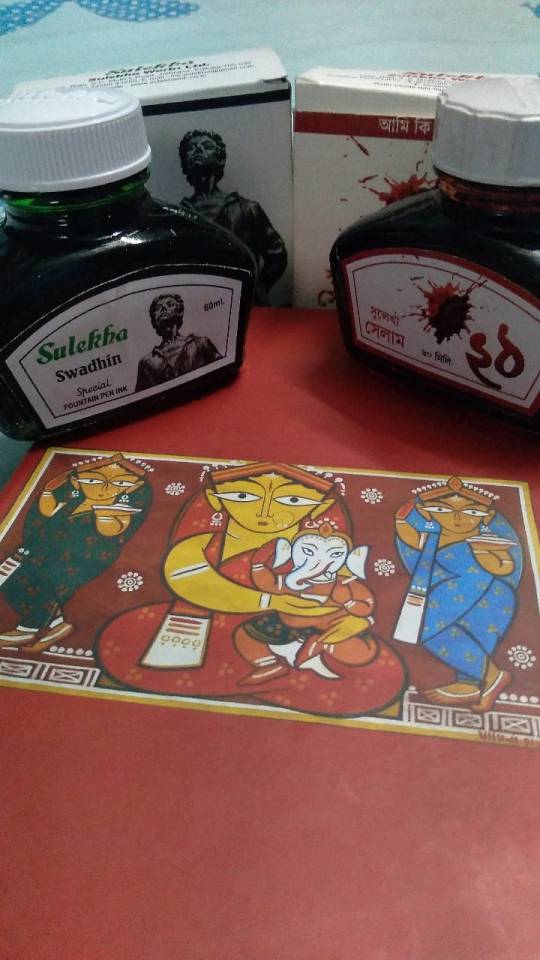
এক ফালি ইতিহাস
A Slice of History
So my father went to the Kolkata International Bookfair or any Bangali's favourite Boimela. He saw a stall of Sulekha inks...The Sulekha inks and of course he had to explore.
Let me share with you a brief history of Sulekha....
Around 1932 Satish Das Gupta, an ex-chemist of Bengal Chemicals prepares Swadeshi ink, names it Krishnadhara and sells it through Khadi outlets. He then hands the recipe over to Maitra brothers Shankaracharya and Nani Gopal and asked them to make the ink commercially and call it Sulekha ( there is also a story which claims Kobiguru Rabindranath Thakur gave them the name সুলেখা or Sulekha ). After years of an illustrious journey they closed around 1990 and then reopened in 2006.
So my father purchased three things. Two inks and a notebook.
The first ink is a blood red ink called সেলাম ( Selaam or Salaam ). It was made as a gift to Bangladesh commemorating The Language Movement ( ভাষা আন্দোলন ). At first 21 bottles were gifted as a tribute to 21st February. And the creator of the ink mixed in a drop of his blood in the first 21 bottles. Then the ink became popular and was manufactured more. It is a beautiful red colour...and every drop of this ink holds in it the memories of every drop of blood shed for my beloved Bangla Bhasha.
The second ink is a vibrant green. Coloured just like the green of India's Tiranga. This ink was formulated on the day after India's Independence. It is called Swadhin or স্বাধীন.
The third is a notebook made in collaboration with jamini Ray's family. And I absolutely love that notebook.
#history#indian history#spilled ink#miru writes#kolkata#bengblr#desiblr#india#bangladesh#bangla tag#bangla#language#inks#international language day#bhasha dibosh
98 notes
·
View notes
Text
im reading tagore's " home and the world" simultaneously in bangla and English and ik the translation is by his son or nephew or someone but its the worst translation ive ever read. this translation goes word by and word and only deviates to get rid of all the metaphors and similies and everything that makes a good bangla sentence into this childish english that really destroys any and all complexities of the characters. like!! Nikhil is flat as a floorboard, Sandip is a blind extremist who doesn't even believe in his own cause, and Bimala in translation is not a person at all. its the difference between the language these characters use that really differentiates them. no wonder all the English Critics hated this book lmao despite its bias against the swadeshi movement. but honestly i could do a better translation and this version is accepted as the definitive translation because of fucking nepotism. go figure. and also u need to understand to understand Tagore u will always need to understand his religion. otherwise what's the point.
6 notes
·
View notes
Text
Fine, one more post: Further reflections as I do some research on things I didn’t know when I watched RRR.
First, I think the concept of satyagraha is probably a useful one for me to be familiar with if I’m going to continue watching Indian movies. Seems like it’s a backbone of Gandhi’s plan for resistance to the British Empire, and as such probably still an underpinning of Indian society/a huge influence on when violence is justified. See the section for Rules for Satyagraha Campaigns and what that means for how it is justified to resist a public flogging, for example, if you are the victim, the executor, or the onlooker.
Second, it is a principle of modern marketing campaigns that while it’s nice if your ad makes people go “oh yeah, I want to buy that product,” it’s not necessary. It’s more important if people just think about your product regularly, and then when they, say, need to go to the hospital, theirs is the one whose name they know to request. It’s a principle of propaganda, perhaps in a similar vein, that if you say something often enough, no matter how stupid, people will eventually come to believe it. Perhaps, on some level, that’s a matter of making your internal voice repeat that phrase - but the end point is, it doesn’t matter if propaganda is good so long as it’s repeated.
...Hyacinth wants to tell me things, more on reading the Wiki page on the Indian independence movement later (tomorrow?)
Ooh, the doctrine of lapse is vicious.
Okay, so summary of my wiki reading so far, as a sort of timeline:
There was never actually a period where India was not rebelling against British/BEIC rule. (I don’t mean there was a rebellion going at all times, just that the British Empire conquered the last bits of India in like 1849 and the first revolutions were occurring by 1857, but that’s if you don’t count the rebellions in the conquered bits before that last bit was conquered.)
The major item preventing widespread revolution was that there was no concept of ��India’ at this time - it was a lot of different countries, so why would they work together? And what actually started to deal with that was... the garment industry!
(The garment industry plays a much stronger role in every period of history than one would initially think - consider spinsters, viking ship sails, purple dyes, etc. We might not even be past that point, despite industrialization, if there’s ever widespread revolution against sweatshop practices, I’m not ruling it out.)
The problem in India was classic British colony practice: they require you to grow and export cotton at low prices, then they process it in Britain and ship it back to you to have finished garments sold at high prices. This was widely agreed to be bullshit, and there was widespread support for Indian-made garments and factories (swadeshi, which does not solely refer to the garment industry). And while I am just reading the Wiki article and there is philosophical movement going on as well, I think that that is where we got this idea that India might be one country (well, that and the Brits) - from which point ‘India should rule itself’ (swaraj) is an obvious conclusion.
Wait, I skipped a step - the independence movement officially started in 1857, among the sepoys (local Hindu/Muslim troops), because the British started using a particular gun whose cartridges were rumored (were?) to be manufactured with tallow and/or lard - meaning cow and pig fat. So when troops had to bite those cartridges as part of the loading process, they were violating religious taboos, and this irritated troops in general and one Mangal Pandey in particular enough that there was a brief mutiny (coupla months) which resulted in Britain taking the governance of India back from the British East India Company.
Anyway.
At this point, after the whole swadeshi business, we’re getting into the early 1900s, and various revolutionary cells making the news. In particular very young revolutionaries (Khudiram Bose) getting executed, which is an excellent way to make martyrs. And then WWI happens, and Britain goes “oh no if India exploded in revolution that would be very bad for us” and Germany goes “oh yes if India exploded in revolution that would be very good for us” and India as a whole goes “why does everyone think we are going to explode in revolution instead of supporting this very justified war?”
(Nimbler: Why do they think World War One was something they should support??)
- and this one group of a mere 21 people (Jugantar) managed to get their fingers in I swear every single conspiracy across the entire country, it’s really impressive. But the result on a larger scale is that Britain keeps cracking down on plots that aren’t successful or widespread, because they’re skeered, which results in sufficient oppression (esp. the Rowlatt Acts) that they have something to actually be skeered about.
So after the war, India went, “We sent men to your war, who didn’t come back. We suffered hunger and influenza. The economy’s a wreck. After all of this, we deserve the reward of ruling our own country.” To which Britain responded, “That seems reasonable. What if we set up an Indian government so you can practice this sort of thing, and it will work together with British rule, and you can be in charge of unimportant stuff like agriculture and public works, and we’ll do the important stuff like finances and policing? And at the same time we’ll expand wartime emergency acts like indefinite detention.”
(as regards my watching RRR, this is the status in 1920 - an Indian congress that can advise British rule but is actually only a year old and only allowed to touch ‘unimportant’ things)
Enter..... Gandhi
5 notes
·
View notes
Photo
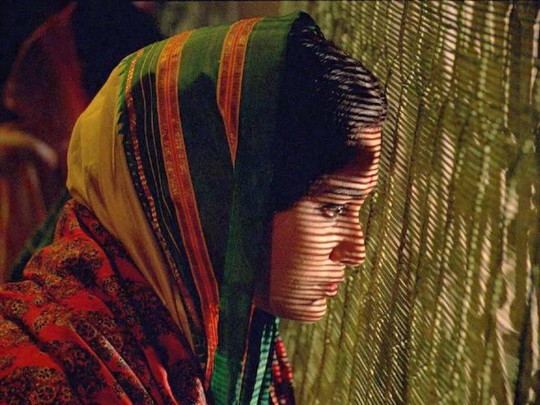
Swatilekha Sengupta in The Home and the World (Satyajit Ray, 1984)
Cast: Soumitra Chatterjee, Victor Banerjee, Swatilekha Sengupta, Gopa Aich, Jennifer, Kendal, Manoj Mitra, Bimala Chatterjee, Indrapramit Roy. Screenplay: Satyajit Ray, based on a novel by Rabindranath Tagore. Cinematography: Sumendru Roy. Production design: Athoke Bose. Film editing: Dulal Dutta. Music: Satyajit Ray.
Revolutions are mounted in the name of human betterment, but humanists -- those who try to act upon their belief in the potential of all human beings -- make lousy revolutionaries. That seems to be the message of Satyajit Ray's The Home and the World, an adaptation of a novel by Rabindranath Tagore that Ray had wanted to film almost his entire career. He finally overcame the obstacles to its filming in the last years of his life, but paid the price of two severe heart attacks while making it. He supervised its completion by his son, Sandip Ray. While it's rich in images and performances, the film does seem a little slow in telling its complex story. Satyajit Ray, who also wrote the screenplay, resorts occasionally to voiceovers, often a sign of uncertainty on the part of a filmmaker about whether his story is getting clearly told. The film begins with Bimala (Swatilekha Sengupta), the wife of the wealthy Nikhilesh Choudhury (Victor Banerjee), being tutored in English style and manners by Miss Gilby (Jennifer Kendal). Specifically, Bimala is learning an English parlor song, "Long, Long Ago." But Nikhil, who is a nascent liberal reformer, wonders why Bimala should be learning a foreign song. He becomes determined to free her from the strictures imposed on Indian women: Among other things, she's confined to only part of their large house -- women are forbidden to enter the part where he entertains guests. So when his friend Sandip (Soumitra Chatterjee), a spokesman for Swadeshi, the revolutionary movement protesting British rule, comes to stay in that part of the house, Nikhil takes Bimala down the corridor that connects the two parts -- shocking Bimala's widowed sister-in-law (Gopa Aich), who lives a life of idle complaining about her lot -- and introduces her to Sandip. It's an electric moment. Suddenly, not only her home but also the world of politics is opened to Bimala. Eventually, Sandip and Nikhil will have to clash, not just over Bimala but also over Swadeshi's program to have the country boycott foreign goods and learn to rely only on India-produced merchandise. The year is 1907, when the British mandated a partition of Bengal into separate Hindu and Muslim regions, and the religious separation only adds fuel to the economic conflict. Nikhil is in favor of Swadeshi up to a point, but as a man who owns a largely Muslim-run market, he also knows that eliminating foreign goods will hurt the poor, who can't afford the higher-priced Indian items. Bimala becomes the film's focal point for the division between Sandip's fervor and Nikhil's idealism, with tragic results. The three central performances are superb, and the color cinematography of Soumendu Roy and production design by Ashoke Bose are handsome, but the merger of history and romantic fiction is uneasy, with occasionally sketchy results on both counts.
5 notes
·
View notes
Text
UNDERSTANDING FASHION
Designing, making, and distributing clothing in an ethical manner minimizes the harm done to people and the environment. In a perfect world, it benefits people who work in the supply chain and improves everyone's future, not just that of the wealthy few.
Although the term "ethics" in this context is ambiguous, ethical fashion is concerned with societal impact and the principles that underlie a brand's label. The recently invented expression is regarded as the antithesis of quick fashion. Consumers typically use the term "ethical fashion" to refer to a movement against an industry that is infamous for underpaying workers—and doing so in hazardous conditions.
Questions like "Who created this garment?" and "Is that individual getting a reasonable living wage?" are addressed by ethical fashion. It is, however, much more than that.
Of course, proponents of ethical fashion are hoping for the first scenario, but it may also rely on how rapidly genuine ethical firms can communicate with customers clearly. Consumers frequently become confused and easily susceptible to greenwashing without clear information from fashion companies about how, where, and by whom clothing is made. They may also incorrectly interpret a brand's specific ethics. The best approach for brands to help clear up misunderstanding is through certifications, in-depth reports, and honest responses to consumer questions.

fashion made by hand looms
The foundation of Indian heritage is culture, craft, and textiles. In actuality, India is the world's second-largest exporter of textiles. A nation that has created khadi, ikats, jamdani, Venkatgiri, Chanderi, Kanjeevarams, and so many other types of textiles may confidently assert its self-sufficiency in this area. The Swadeshi Movement, which was started on this day in 1905 in the Calcutta Town Hall to protest against the British Government's division of Bengal, was recognised on August 7 as National Handloom Day.
The power loom is an automated loom that weaves fabric, whereas the hand loom is a manually operated machine for weaving cloth. The textile industry embraced the power loom as a result of the development of technology and machines for more rapid and efficient manufacturing. In exchange, the handloom sector suffered. But recently, with all the buzz about slow-fashion, celebrities and actors have been promoting handloom materials in the fashion industry.
KHADI
Khadi is no longer only a simple, uninteresting alternative; it is now a sustainable and timeless addition to your wardrobe. The khadi has received a fun makeover as a result of the just concluded Lakme Fashion Week highlighting sustainable fashion. You can rely on designers like Abu Jani, Rohit Bal, and Sandeep Koshla to bring grandeur and beauty to our nation's traditional fabric while adding cutting-edge modern twists. Khadi has an enduringly regal appeal, whether it's in the form of lehengas, golden skirts, or billowing gold Anarkalis paired with palazzos. Therefore, if you don't already have this noble cloth in your closet, it's time to buy some.

Here are some styling suggestions for handloom that were inspired by our own local celebrities to seem modern and chic.
Ensure simplicity. Because of the unique beauty and charm of handloom fabrics, it is preferable to play down the outfit. To add some personality to your look, add some statement earrings or a bold lip colour.
Layering with handloom fabrics is a terrific idea, first for their light weight and second for the muted colours they come in.
Play with the shapes; go boxy with loose-fitting kurtis, dresses, or tops.
ACCESSORIES
There are many possibilities available on the market for ethnic jewellery. Wear your handcrafted kurtas with delicate silver jewellery, tribal jewellery, or even the perennially fashionable hoop earrings in a circle shape. Even better, you may accessories them with beads, chaandbalis, or vibrant tassels. Only choose accessories that go with the outfit you are wearing.
You can wear light jhumkas during the day, but you should save your shoulder-grazing hoops and crystal shards for evening wear. Try out slides, mules, jutties, or platforms for your shoes. Try experimenting with geometry and shapes in bags, such as an arc sling or a cube box bag, for your arm candy.

PREDICTING TRENDS
Predicting a market's future is the focus of the field of trend forecasting. Every industry employs trend analysts who use information from previous sales to predict opportunities in the future. Thus, the area of the fashion industry known as fashion forecasting is concerned with foreseeing new fashion trends, including colours, styling techniques, fabric textures, and more, that will pique customer demand. Product developers use the trend forecasts that fashion forecasters publish to build new apparel and accessories for brands.
OVER TIME
Macro trends, which are significant changes in fashion that will be important for longer than two years, are what long-term forecasting is all about. The broad trends that shape the fashion industry include shifts in lifestyle, demographics, and the method that clothing is produced and distributed.

LIMITED TIME
Micro trends have to deal with short-term forecasting. Season to season, short-term projections vary and are often influenced by color, style, pop culture, and current events.
Forecasting Trends for Fashion Brands
Every brand has a different method for predicting trends. Because womenswear firms typically release more collections per year than masculine brands, they frequently invest more in micro trend monitoring. The size of the business and its target market can affect forecasting, but there are a number of trustworthy techniques that brands can use to predict trends.
Employing internal trend forecasters Large fast-fashion companies frequently have internal trend predicting capabilities because of their vertical integration. In order to design new items, this enables the fashion forecasters to collaborate directly with product development teams.
With a trend forecasting agency: Bigger brands without vertical integration frequently seek out the knowledge of trend forecasting agencies, which charge a fee for their trend research reports.
By attending fashion shows: Prior to the development of the Internet, trend forecasters conducted the majority of their research at fashion shows, where they took note of the most promising looks. They then forwarded this information to product developers at chain stores and fashion publications like Vogue. This type of forecasting, known as "top-down" forecasting, is based on how trends in fashion spread from high-end runways to department stores
By paying attention to influencers: In the modern world, trend forecasters are more likely to consult blogs, street style, and influencers for the most recent trends. This type of forecasting, known as "bottom-up" forecasting, entails attentively watching a target market to forecast demand for emerging trends.
By observing other sectors: Small independent fashion designers might forego trend spotting altogether and instead create mood boards based on literature, cinema, and the outdoors to inform their distinctive collections.
To predict the future of fashion, the majority of trend forecasters combine "top-down" and "bottom-up" forecasting techniques with in-depth knowledge of the fashion industry and personal intuition.
2 notes
·
View notes
Text
“EARTH PROVIDES ENOUGH TO SATISFY EVERY MAN'S NEED BUT NOT ANY MAN'S GREED.” – MAHATMA GANDHI
I’m Gargi Gosavi a student at NIFT, Gandhinagar. Fashion is something that has always fascinated me since I was a teenager. I made sure I had the trendiest outfits. Back then buying things from H&M, Zara and other fast fashion brands didn’t matter as much as it does now after knowing the back story of the fast fashion brands. Coming to NIFT was like a dream come true. While doing my research for the course I want to apply for textile design was something which caught my attention. After high school, I gave my entrance exam and here I'm today in Gandhinagar. Learning the subject of Fashion Basic has changed my perspective towards fashion.

It was my first time when I was presenting. My anxiety had reached the peak. I was not very confident about myself that time. My first presentation was on “fashion according to you” my topic for this presentation was the Nike Air Jordans and Air Force which we all know are trendy. In my presentation I talked about their history, price, different types of Jordans, Air Force and how people take care of them like their own babies. On the very first day, we were told about our mid term assignment, which was to dress up reflecting our traditions and state we belong to. Coming from Maharashtra and being a Maharashtrian I was wearing a Nauvari saree(nine yard saree) which I sourced from my sister in law. I was wearing all the traditional Maharashtrian accessories from head to toe.In my presentation I spoke about the history of nauvari saree ,textiles, food, culture and festivals of Maharashtra. These presentations helped me become confident about myself.
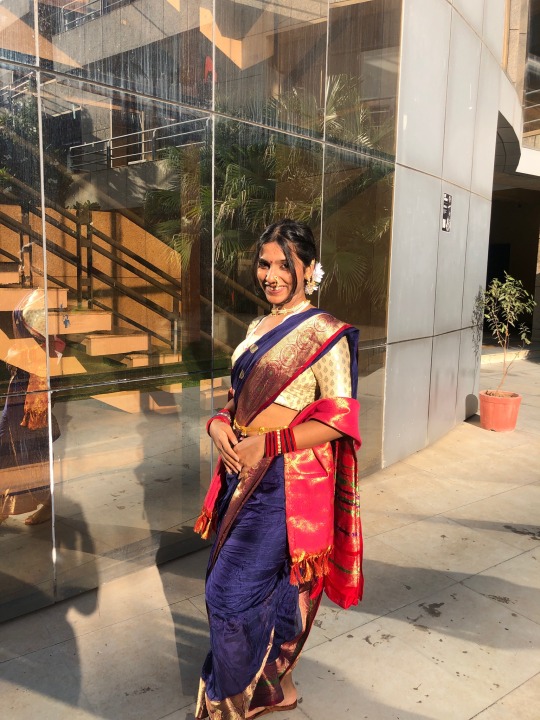
Fashion changed my perspective
It’s tempting to turn a blind eye in front of such flashy offers, but the planet can’t take it anymore!
If you’re used to buying clothes without questioning how they were made, acknowledging these fast fashion facts can be the first step towards making an actual change.
I now have realised that fashion is not only about clothes and looking fashionable. It may look very glamorous from the outside but it has a dark side that very few people are aware of. We had a debate in our class on slow fashion and fast fashion which changed my perspective. Buying clothes from fast fashion brands will make you look fashionable but how about the damage it’s creating to the environment? We don't even know that the people working for these brands are even safe. Are they paid well? We all are aware of the Rana Plaza collapse in Bangladesh where around 1136 people lost their lives and 3120 people were injured. The conditions where the people are working for these brands are unsafe and promote child labour. Millions of children are forced to work in terrible conditions for the clothing we wear. We don’t even know that the women working for the clothes are even safe. We all wear clothes even if we’re not necessarily lovers of fashion but we all are responsible for the transition to this flourishing fashion industry. The materials these brands use are harmful to the environment.Fast fashion is responsible for 20-35% of ocean microplastics Another problem with polyester and synthetic fabrics is that every time you wash them, they’ll release between 700 to 4000 plastic polyester per gram.These end up in the ocean, fish bellies, and… yep, yours too if you eat seafood. Polyester now has been found in breast milk as well. Can you imagine how much worse the situation is? Fast fashion clothing relies upon planned obsolescence unlike durable vintage or ethical clothes. These items are designed to fall so that the consumers like us will keep buying new items regularly.
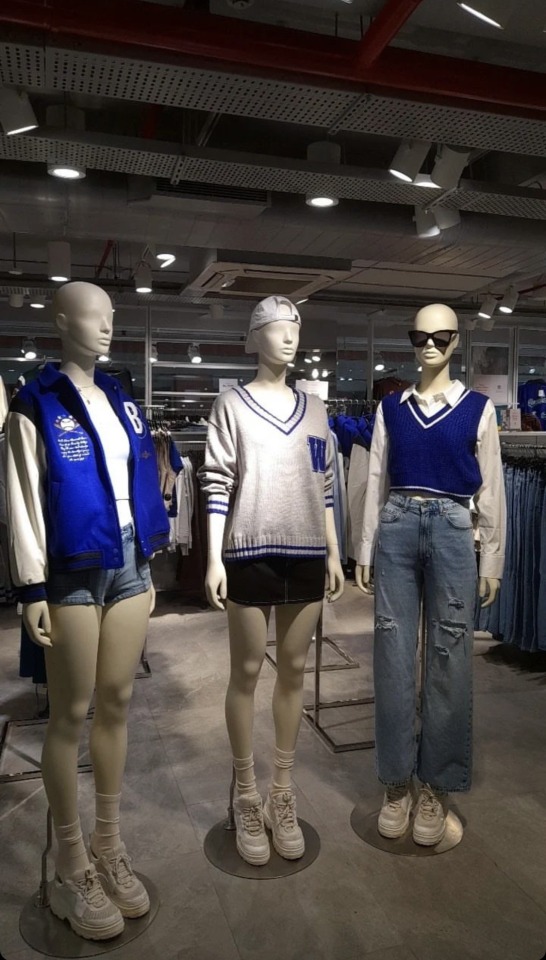
Can we bring change as Gandhiji did?
Let me take you back to the time when Gandhiji started a Swadeshi Movement a movement designed to boycott imported goods and production. The citizens of India burnt all the clothes which came from the UK and started to make their clothes using the charkha. Khadi cloth became the heart of this strategy when Gandhi asked every man and woman to plant and harvest their materials for the yarn needed to create Khadi fabric. He also asked everyone, whether rich or poor, to spend time each day spinning Khadi. People of all classes came together to do as Gandhi asked, and their efforts helped the country in its bid to become self-sufficient. Entire villages adopted the movement, weaving their way to economic freedom through fashion. Let’s support our artisans and our culture by following slow fashion.

Do slow-fashion items last longer?
Items from my grandmother and even my mother when she was young are still in pristine shape. I can not say the same for the items I bought some years ago from fast fashion brands. Why? Have you ever heard of planned obsolescence? If the stitching is not good, if the materials are not great, the piece will not stand washing and wearing. And so, eventually will not be good to be worn. Now, you need to buy a new piece, and here we go again. This is easy math, high quality = longer-lasting item. Slow fashion items are long-lasting so you can wear them as long as your heart desires. In the end, it is cheaper to purchase a more expensive item. It is a win-win for you and the environment.After the debate, I was thrilled after knowing the damage fast fashion brands are creating in the environment and that the people working for these brands are miserable and unsafe.
How You Can Make Sustainability Stylish
One of the biggest drivers of fast fashion – and its associated waste – is the consumer. After all, no one wants to be stuck wearing outdated outfits. But if you extend the life of your clothes by just nine months, you can reduce the environmental impact by as much as 30 per cent. By getting creative with your closet, you can make a difference just like I did in lockdown I had nothing to do so I used to experiment with my brother's clothes. He had a black old t-shirt which he wasn’t using anymore so I decided to make a top for myself by cutting and splitting the tshirt into two halves, folding &twisting it around my neck and chest and creating a pattern in itself. The other top was a normal top where I stitched straps of the remaining fabric and made it a tie-around crop top.



Know what would trend in future
As a beginner in the design industry the fact that we can predict what will trend in future surprised me. I didn’t know something like this existed until I learnt about fashion forecasting.
Fashion forecasting is something that focuses on upcoming trends. Prediction of the colours, textures, fabrics, style, beauty, etc that will be presented on the runways and in upcoming seasons.
Is polyester the new Khadi?
During the pre-independence period people started to use the hand-spun cloth that remains warm in winters and cool in summers. We visited Reliance Trends to see their winter collection and overall clothes. One thing which we noticed was that none of the sweaters had wool as their material. 90-95 per cent polyester was used in sweater. Polyester is a performance textile, used in activewear, athleisure, etc. Polyester is used everywhere and is recyclable. We all know how harmful this fabric is and when I saw the amount of polyester each and every clothing item contained I was stunned! The traditional wear and the kids section clothing was mainly made using cotton. They also had the sustainable denim.
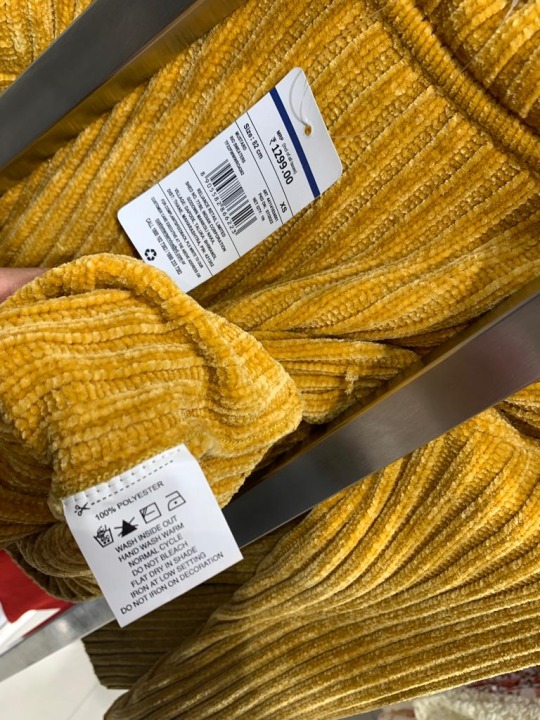
Reviving our handloom heritage
An exhibition of the artist weaver Rajen Chaudhari was organised by CEPT University in Ahmedabad. He was a student at JJ School of Arts, Mumbai. Having interest in textiles, he went to different places in India where he could learn how to use a handloom weave. He practised hand spinning and hand weaving for a very long time. His work was stunning which had patterns using the weave, very intricate and each one of them was unique in its own way. He transformed his paintings and sketches into weaves. There was a handloom weave and a spinning wheel kept where a lady showed us how it is functioned. The process involves entwining a set of vertical threads, the wrap with a set of horizontal threads, the weft.
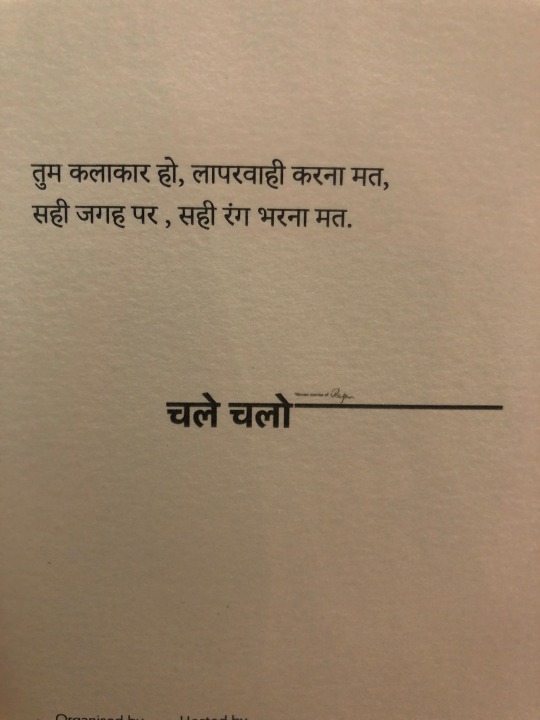
The second visit was to Kasturbhai Lalbhai Museum. Kasturbhai Lalbhai was one of the pioneering Industrialists of pre and post-independent sage of India. One can see the vast panorama of Indian art history ie. Mughal, Rajput, Pahari, Bengal school – early modern and contemporary art, all under one roof is unique. Inside the house, which is now the museum there was a beautiful collection of old paintings using natural paints, betels used for the emerald colour on the gold foil, watercolours, etc. The artist back then made every painting/artwork meticulously. I was speechless after seeing those paintings which were done so thoughtfully and with intricacy. The furniture on which the exhibition was displayed was designed by the students of NID.
The next place was the White on White exhibition of Mr Asif Shaikh who is one of India’s most accomplished and acclaimed embroidery and textile artist. He’s on a 5 yr project which he started back in 2020 in which he is making 100 textiles out of which 37 are done with the help of Indian artisans. These 37 textiles were an introduction to his new collection. We could see the efforts he had put into fabricating those textiles. All the designs were very unique and were from different regions of India. His work astonished and inspired me.
The next exhibition was of Arvind Indigo museum where it has opened a world of possibilities for unexplored surfaces such as metal, stone, paper, leather, polyester fibre, glass, and wood, among others.
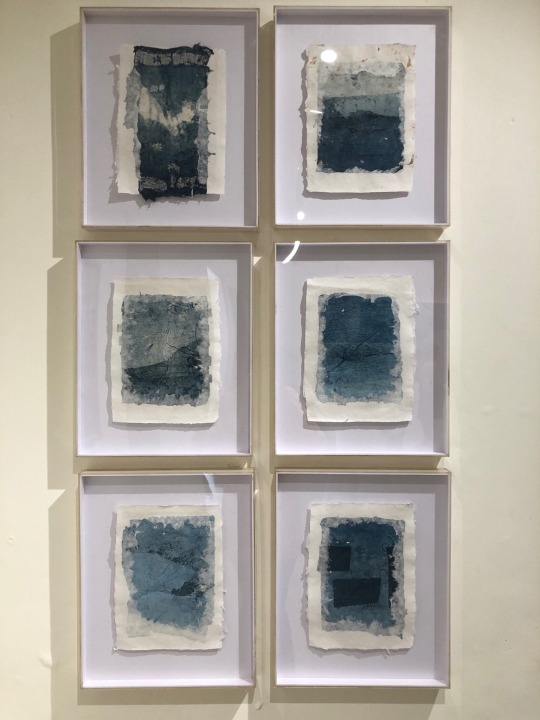
Knowing the bitter reality of the fast fashion industry I’ll make sure to follow sustainable fashion as much as I can. And lastly I would like to conclude by extending my heartiest gratitude to Miss Neha Kedia and NIFT Gandhinagar for providing us this opportunity and opening windows of exportation through this educational visits and giving us a glimpse of industry life.
4 notes
·
View notes
Text
How Parle-G Became a Household Name in India
Origin and Founders’ Story Parle-G, one of the most iconic biscuit brands in the world, traces its origins back to 1929 when Mohanlal Dayal Chauhan founded Parle Products in the Vile Parle suburb of Mumbai, India. Inspired by the Swadeshi movement, which encouraged the use of Indian-made goods, Chauhan aimed to create a confectionery company that could compete with British brands dominating the…
0 notes
Text

Send from Sansgreet Android App. Sanskrit greetings app from team @livesanskrit .
It's the first Android app for sending @sanskrit greetings. Download app from https://livesanskrit.com/sansgreet
Bipin Chandra Pal.
Bipin Chandra Pal (7 November 1858 – 20 May 1932) was an Indian nationalist, writer, orator, social reformer and Indian independence movement freedom fighter. He was one third of the “Lal Bal Pal” triumvirate. Pal was one of the main architects of the Swadeshi movement along with Sri Aurobindo. He stood against the partition of Bengal by the colonial British government.
#sansgreet #sanskritgreetings #greetingsinsanskrit #sanskritquotes #sanskritthoughts #emergingsanskrit #sanskrittrends #trendsinsanskrit #livesanskrit #sanskritlanguage #sanskritlove #sanskritdailyquotes #sanskritdailythoughts #sanskrit #resanskrit #bipinchandrapal #lalbalpal #nationalist #freedomfighter #indianindependance #swadeshi #bengal #bengali #habiganj #calcutta #politician #writer #orator #socialreformer #celebratingsanskrit
#greetingsinsanskrit#sanskritgreetings#sanskrittrends#trendsinsanskrit#livesanskrit#sanskrit#celebratingsanskrit#incredibleindia
0 notes
Text
10 Things Students Can Learn from Mahatma Gandhi
Mahatma Gandhi, a pivotal figure in India's struggle for independence, left behind a legacy rich with wisdom and principles that remain relevant today. Students, in particular, can draw invaluable lessons from his life and teachings.
1. Embrace nonviolence (Ahimsa)
Gandhi’s unwavering commitment to nonviolence teaches us the power of peaceful resistance. Students can learn that conflicts and challenges can be resolved without aggression, emphasizing the strength found in peace.
2. Uphold truth and integrity (Satya)
Living a life of truth and integrity was central to Gandhi’s philosophy. Students can understand the importance of honesty and ethical behavior, striving to be truthful in all their endeavors.
3. Practice perseverance and patience
Gandhi’s prolonged struggle for India’s independence underscores the value of perseverance and patience. This lesson is crucial for students facing their own challenges, reminding them that persistence can lead to success, no matter how difficult the journey.
4. Cultivate self-discipline
Gandhi’s life was marked by strict self-discipline, including fasting and leading a simple life. Students can learn the importance of self-control and discipline, essential for personal growth and academic success.
5. Promote equality and respect for all
Gandhi fought tirelessly against social injustices, advocating for the equality of all individuals. Students can learn to respect diversity, promote inclusivity, and stand against discrimination in their communities.
6. Value simplicity
Gandhi’s lifestyle was characterized by simplicity and frugality. Students can learn to appreciate the value of living simply, focusing on what truly matters without being swayed by material excess.
7. Service to others (Seva)
Gandhi dedicated his life to serving others. Students can understand the importance of community service, recognizing the impact of helping those in need and contributing to the greater good.
8. Demonstrate courage and conviction
Gandhi’s actions were driven by strong convictions and moral courage. Students can learn to stand firm in their beliefs, even when faced with adversity, and to act with bravery in the pursuit of justice.
9. Foster self-reliance
Gandhi promoted self-reliance and the Swadeshi movement, encouraging the use of locally made goods. Students can learn the significance of self-sufficiency and the benefits of supporting local economies.
10. Commit to education and Continuous Learning
Gandhi valued education and the pursuit of knowledge. Students can learn the importance of lifelong learning, continuously seeking to better themselves and contribute to society through education.
Mahatma Gandhi’s life and teachings offer a treasure trove of wisdom for students. By embracing these principles, students can lead more meaningful, ethical, and fulfilling lives, contributing positively to their communities and beyond.
Mahatma Gandhi’s life and teachings offer a treasure trove of wisdom for students. By embracing these principles, students can lead more meaningful, ethical, and fulfilling lives, contributing positively to their communities and beyond. To learn more about how these values are reflected in a holistic and value-based education, visit Sancta Maria International School.
0 notes